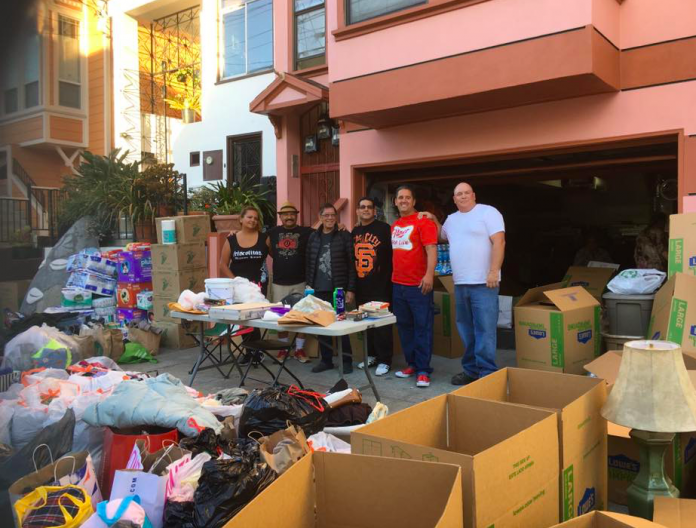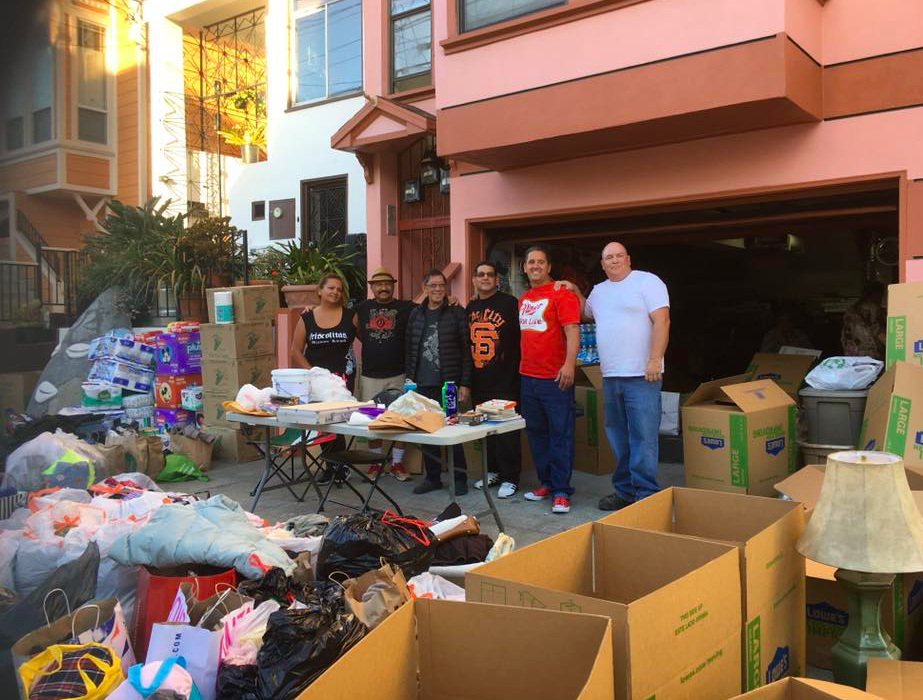
In the wake of the nightmare infernos that have ravaged Santa Rosa, Napa and beyond, San Franciscans have shown an inspired outpouring of care and generosity. The city quickly sent first responders, and many gave money or led grassroots donation drives of supplies north.
The individual care and generosity was moving—people giving time, money, and aid to neighboring Californians in desperate need. (One hopes similar empathy benefits more far-flung victims, such as those in Trump-shamed Puerto Rico.)

What’s missing is a unified coordinated city response. It’s puzzling, given San Francisco’s disaster zone location: you’d think there would already be a plan in place to quickly coordinate massive amounts of aid to nearby people in need.
Instead, as inspired as it was, San Francisco’s support has been ad-hoc and disarrayed—beautiful and admirable, yet insufficient given San Francisco’s tremendous wealth and resources. Beyond first responders, why doesn’t the city have a plan to coordinate emergency (and long-term) aid to communities in need, from a central location to which city residents can contribute?
Rather than countless cars clogging roads in already-stressed areas, why not send a single aid truck delivering daily supplies, guided by the communities in need? In this instance, mayors of Santa Rosa, Napa, and other communities could inform the San Francisco mayor’s office of their changing needs, and receive a single daily shipment as needed.
Individual generosity is deeply affirming, yet also indicative of the declining role of the public sector and civic solidarity. A city as wealthy and prominent as San Francisco, located in a disaster zone frequented by fires and earthquakes, should be prepared to hit the ground running with coordinated aid to its neighbors in need.
While those needs have shifted by the day, ranging from supplies to money, on-the-ground reports indicate that many fire victims still need basic items, such as clothing, toiletries, water and food, the stuff of daily living.
When I contacted the San Francisco mayor’s office and local supervisors, there was no knowledge of any such program or approach. Stunning. How could urgently needed aid to nearby communities be left to individual initiative and philanthropy?
Scanning social media posts by Mayor Ed Lee and the Mayor’s Office, there were plenty of important warnings about air quality, yet few (if any) guiding residents on where to donate supplies or money. City officials and agencies could show far more leadership by promoting collective civic generosity, and giving residents better avenues and opportunities to help those in need.
It would be relatively simple, and immensely helpful, to put a community disaster aid plan in place. One way it could work: the city, responding to a neighbor community’s stated needs, could inform residents of needed donations. Residents could bring needed items to a central location, from which the city would send a supply truck to the community in need. These needs would change over time and be directed by the impacted community.
Such a plan would need to include strong sanctuary-style protections for undocumented immigrants, ensuring that these communities—already isolated and precarious—get the help they need and deserve. (As of now, fund drives are beginning to focus on these communities, including www.undocufund.org, which is working to provide aid to an estimated 28,000 undocumented people in Sonoma County alone.)
The needs of fire victims are immediate, urgent, dire, and long-term all at once. Affordable housing, already a regional crisis before the fires, is yet more urgent now. For the many renters and low- and middle-income workers displaced by the fires, there is an urgent and long-term need for real affordability.
To rebuild and stabilize these displaced families and communities (which will also benefit economies and businesses), local and state legislators should push aggressively for mass-scale affordable housing, in tandem with rent control expansion, to ensure that the thousands displaced by the fires can remain in their communities. One such effort, AB 1506 co-authored by Assemblymember David Chiu, would repeal the Costa-Hawkins Act provisions that prevent cities and counties from controlling runaway rents. So far, the measure has made little headway despite a Democrat-majority legislature.
The immense and heartwarming care shown by San Franciscans and others should now move beyond much-needed charity. The many of us who have donated supplies and money can now push for policies that ensure greater coordinated public response to the next disaster, greater security and services for undocumented people, and real public investment in affordable housing and rent control. The thousands displaced by these horrific fires—and all of us who may be hit by the next disaster—need and deserve a more vigorous public sector that helps rebuild stable communities.
Christopher D. Cook is an award-winning journalist and former Bay Guardian city editor. He writes for the Los Angeles Times, The Atlantic, The Nation, Mother Jones and others. He donated his payment for this piece to help undocumented fire victims, via www.undocufund.org.


“Instead, as inspired as it was, San Francisco’s support has been ad-hoc and disarrayed—beautiful and admirable, yet insufficient given San Francisco’s tremendous wealth and resources. ”
Same could be said about the way this city functions – it’s par for the course.
The city has scattered emergency trailers at different locations. Some with flat tires, old materials (dates) and may not be accessible post an earthquake.
SF needs to plan better because our turn may be next…